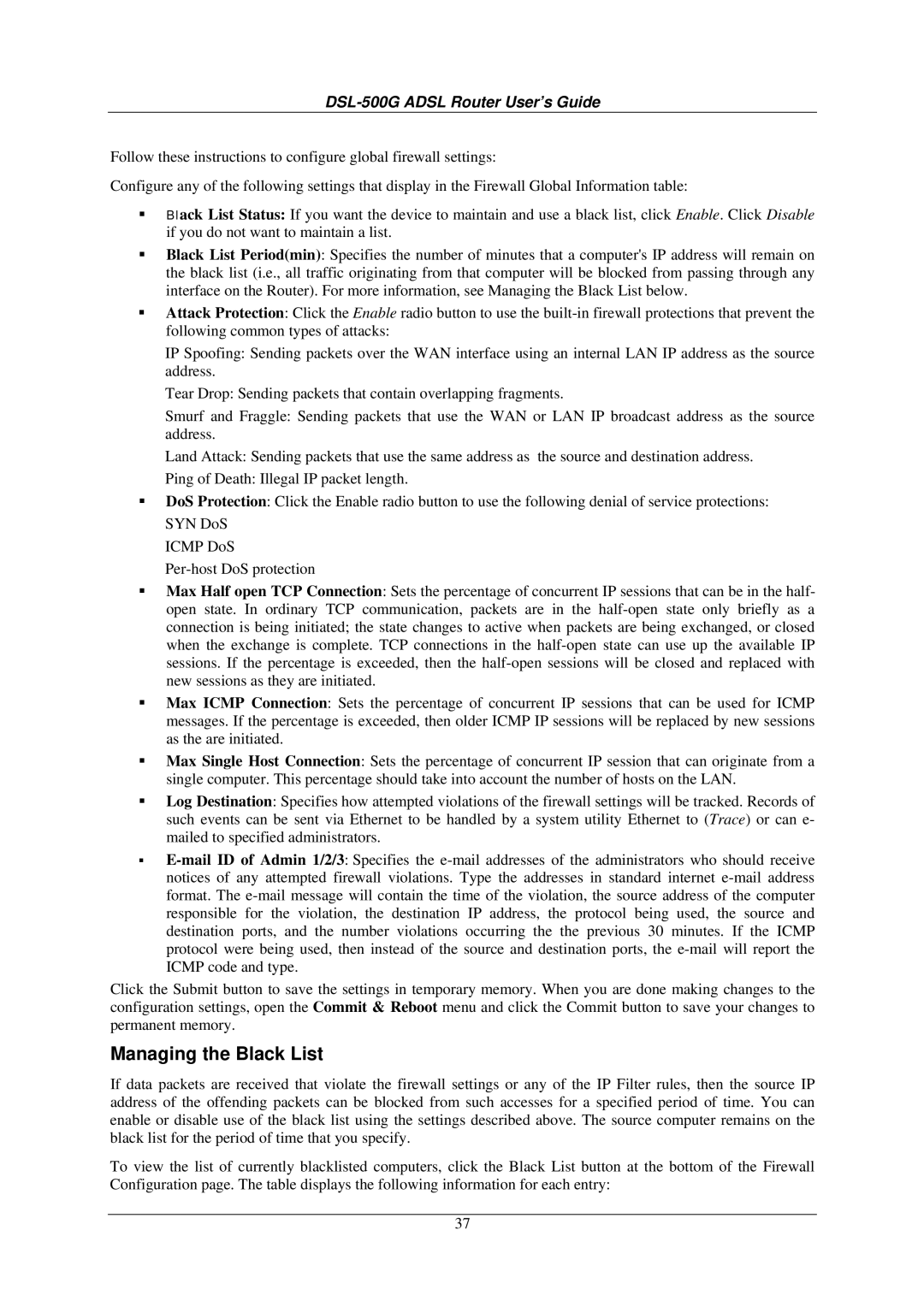
DSL-500G ADSL Router User’s Guide
Follow these instructions to configure global firewall settings:
Configure any of the following settings that display in the Firewall Global Information table:
Black List Status: If you want the device to maintain and use a black list, click Enable. Click Disable if you do not want to maintain a list.
Black List Period(min): Specifies the number of minutes that a computer's IP address will remain on the black list (i.e., all traffic originating from that computer will be blocked from passing through any interface on the Router). For more information, see Managing the Black List below.
Attack Protection: Click the Enable radio button to use the
IP Spoofing: Sending packets over the WAN interface using an internal LAN IP address as the source address.
Tear Drop: Sending packets that contain overlapping fragments.
Smurf and Fraggle: Sending packets that use the WAN or LAN IP broadcast address as the source address.
Land Attack: Sending packets that use the same address as the source and destination address.
Ping of Death: Illegal IP packet length.
DoS Protection: Click the Enable radio button to use the following denial of service protections: SYN DoS
ICMP DoS
Max Half open TCP Connection: Sets the percentage of concurrent IP sessions that can be in the half- open state. In ordinary TCP communication, packets are in the
Max ICMP Connection: Sets the percentage of concurrent IP sessions that can be used for ICMP messages. If the percentage is exceeded, then older ICMP IP sessions will be replaced by new sessions as the are initiated.
Max Single Host Connection: Sets the percentage of concurrent IP session that can originate from a single computer. This percentage should take into account the number of hosts on the LAN.
Log Destination: Specifies how attempted violations of the firewall settings will be tracked. Records of such events can be sent via Ethernet to be handled by a system utility Ethernet to (Trace) or can e- mailed to specified administrators.
Click the Submit button to save the settings in temporary memory. When you are done making changes to the configuration settings, open the Commit & Reboot menu and click the Commit button to save your changes to permanent memory.
Managing the Black List
If data packets are received that violate the firewall settings or any of the IP Filter rules, then the source IP address of the offending packets can be blocked from such accesses for a specified period of time. You can enable or disable use of the black list using the settings described above. The source computer remains on the black list for the period of time that you specify.
To view the list of currently blacklisted computers, click the Black List button at the bottom of the Firewall Configuration page. The table displays the following information for each entry:
37
